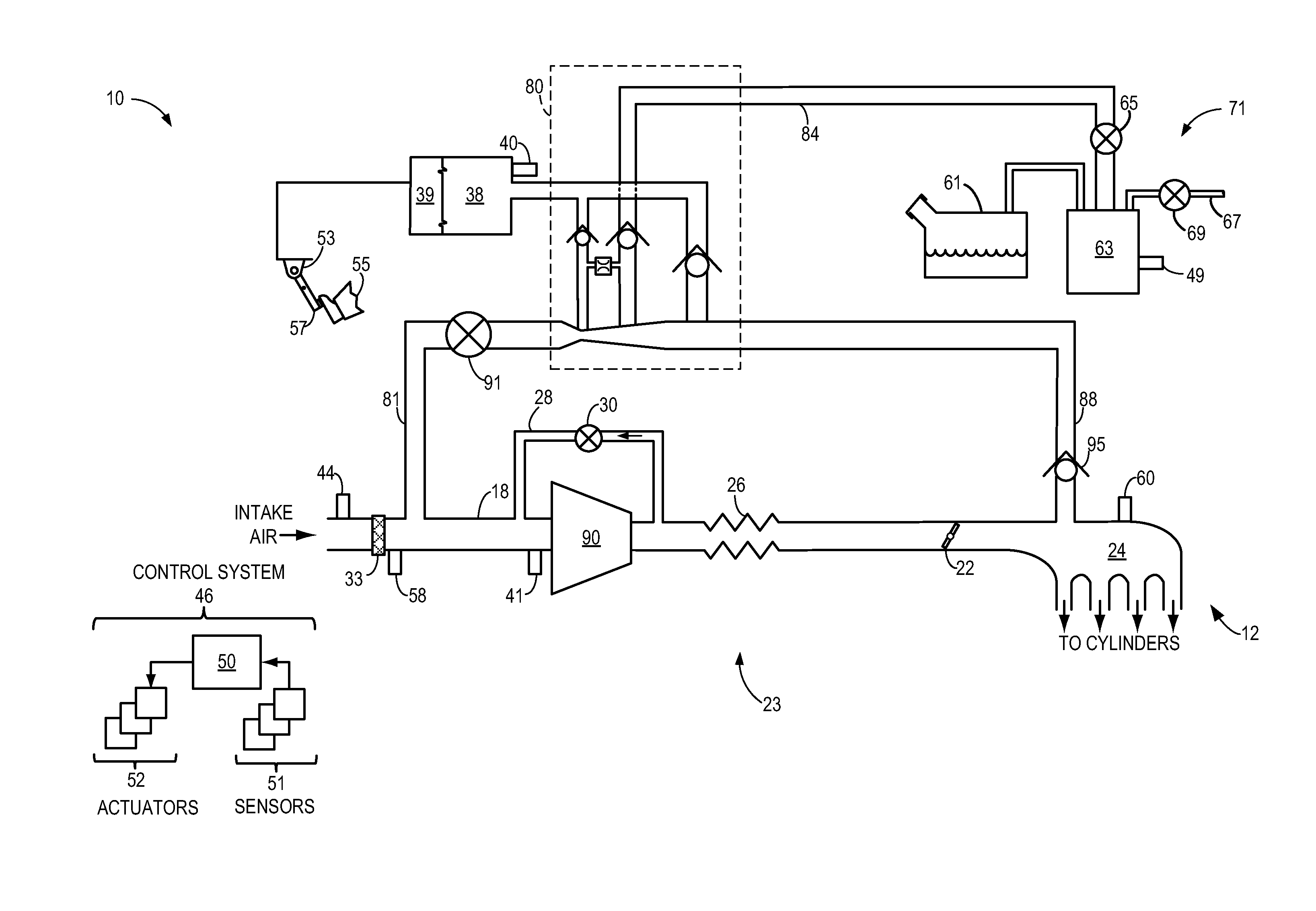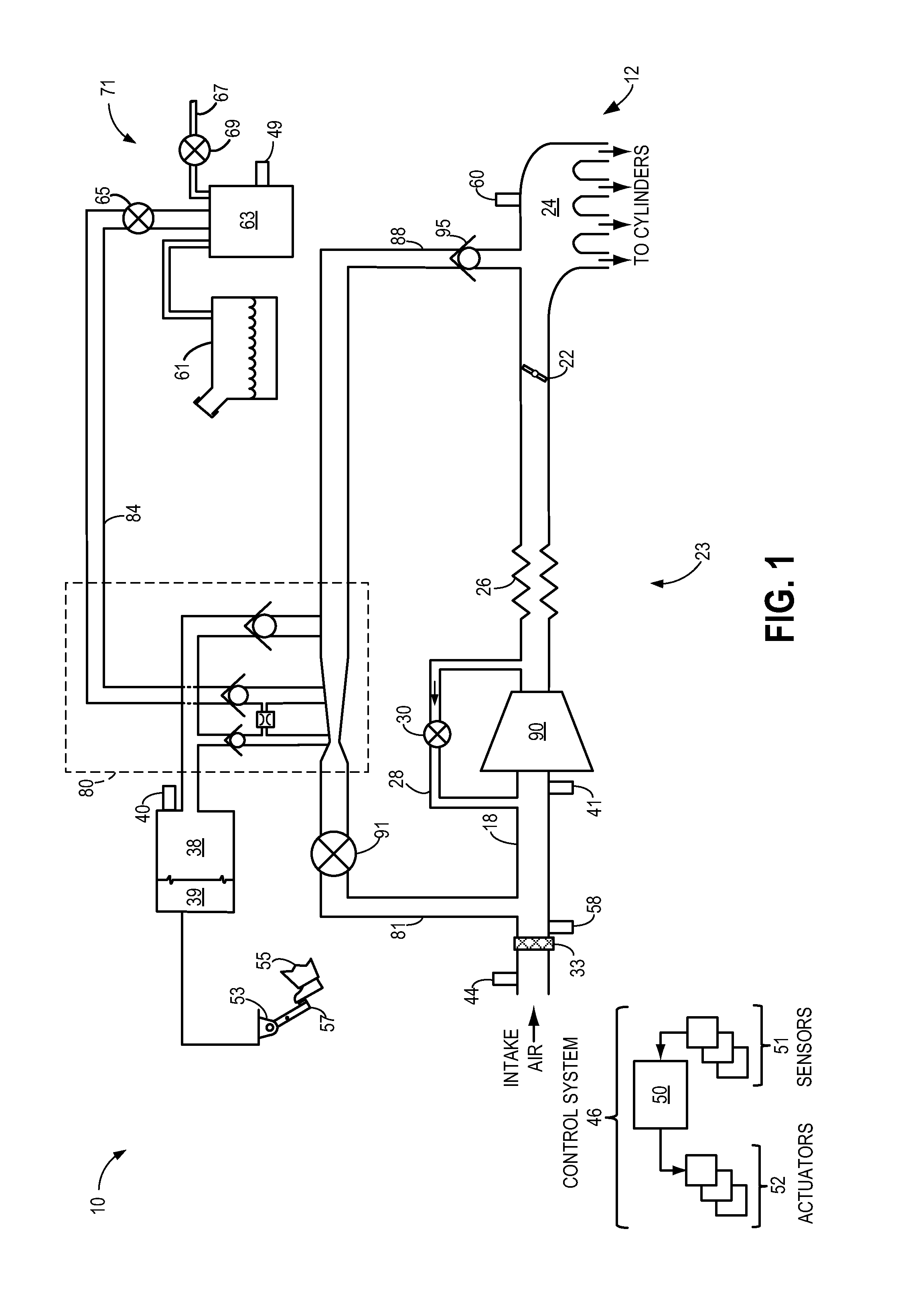Multiple tap aspirator with leak passage
a technology of leakage passage and aspirator, which is applied in the direction of combustion engine, combustion air/fuel air treatment, charge feed system, etc., can solve the problems of vacuum reservoir vacuum loss, inability to use, and various disadvantages of aspirators, and achieve the effect of low-cost vacuum generation
- Summary
- Abstract
- Description
- Claims
- Application Information
AI Technical Summary
Benefits of technology
Problems solved by technology
Method used
Image
Examples
first embodiment
[0056]In contrast to diffuser 11 of the aspirator shown in FIGS. 2A-B, diffuser 11 of FIGS. 2C-D may have a diverging flow geometry along its entire length, such that it lacks a constant-diameter portion such as first constant-diameter portion 15 of FIG. 2B. As shown, the sides of the diffuser diverge at a constant angle of divergence (the angle between dashed line 25 and each of dashed lines 27). Accordingly, whereas the diffuser shown in FIG. 2B is designed such that the effectiveness of the diffuser tap is prioritized over the effectiveness of the throat tap, the diffuser shown in FIG. 2D is designed such that the effectiveness of the throat tap is prioritized over the effectiveness of the diffuser tap. Turning to FIGS. 9A-B, they depict an aspirator arrangement 900 which may correspond to aspirator arrangement 80 of the These figures depict suction and motive flow through aspirator arrangement 900 for different system pressure levels when the ASOV is open, when the CPV of the f...
second embodiment
[0060]an engine system including a multiple tap aspirator is depicted in FIGS. 3-4. The second embodiment includes many of the same features described above for the first embodiment; similar features are numbered similarly and will not be described again for the sake of brevity. Further, it will be appreciated that various features among the two embodiments are usable together. For example, the aspirator arrangement of FIG. 3 may be configured in accordance with FIG. 2A or FIG. 2C rather than FIG. 4, or the aspirator arrangement of FIG. 1 may be configured in accordance with FIG. 4 rather than FIG. 2A or FIG. 2C, without departing from the scope of this disclosure. Furthermore, in the depicted second embodiment, diffuser 11 shown in FIG. 4 may correspond to diffuser 11 depicted in FIG. 2B or alternatively diffuser 11 depicted in FIG. 2D.
[0061]In contrast to the first embodiment, wherein the motive inlet of the aspirator arrangement fluidly communicates with the intake passage upstre...
PUM
 Login to View More
Login to View More Abstract
Description
Claims
Application Information
 Login to View More
Login to View More - R&D
- Intellectual Property
- Life Sciences
- Materials
- Tech Scout
- Unparalleled Data Quality
- Higher Quality Content
- 60% Fewer Hallucinations
Browse by: Latest US Patents, China's latest patents, Technical Efficacy Thesaurus, Application Domain, Technology Topic, Popular Technical Reports.
© 2025 PatSnap. All rights reserved.Legal|Privacy policy|Modern Slavery Act Transparency Statement|Sitemap|About US| Contact US: help@patsnap.com



